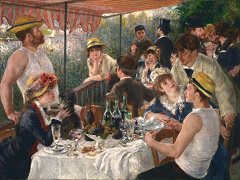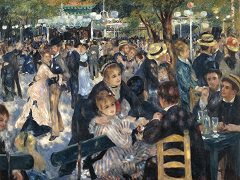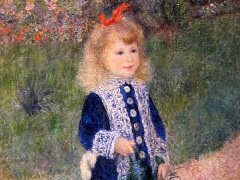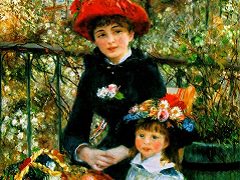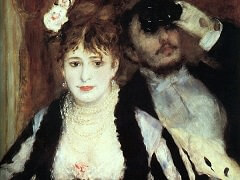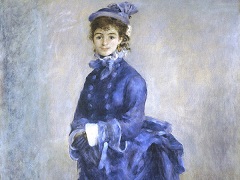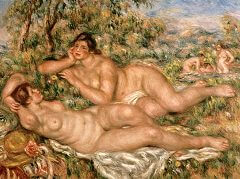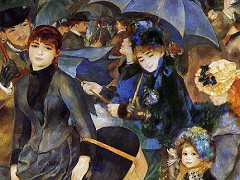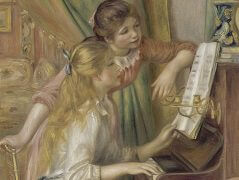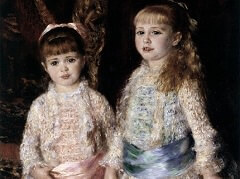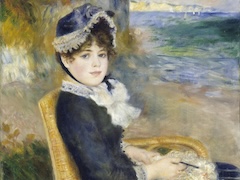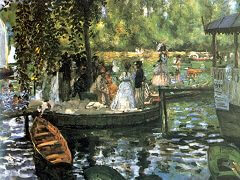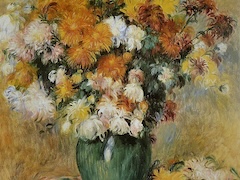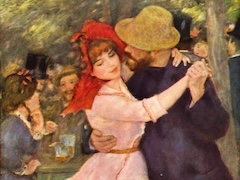Oarsmen at Chatou - by Pierre-Auguste Renoir
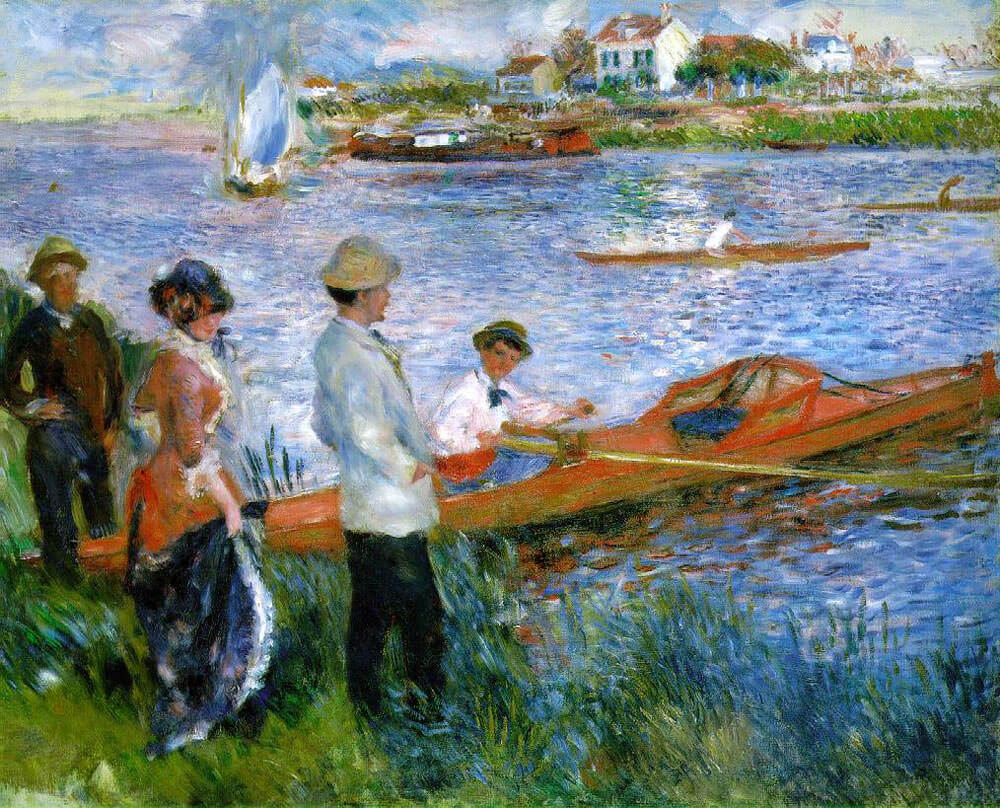
In this canvas, Oarsmen at Chatou, Renoir has returned to one of his favorite spots along the Seine to explore again the beauties of the glinting water. True to Impressionist practice, the artist focuses on the glorious spectrum of outdoor light as it floods the landscape. With a technique that is at once dashing and rigorously controlled, he recomposes in paint his own soft vision of nature's radiance. Yet he relrrajns sensitive also to the wealth of contrasting textures that greet his eye, and adjusts his brushwork to evoke not only the color but the "feel" of grass or water or windy, cloud-filled sky. That he accomplished this double task without sacrifice of internal consistency of technique, or loss of an overall sense of artistic personality, shows how completely Renoir assimilated the Impressionist method to his own purposes. Almost casually he takes in the sweep of the landscape and the happy fellowship of the group of four sketched figures in the lower left of the composition.
The very presence of the boaters suggests another characteristic of Renoir's art. Though like the other members of the Impressionist group he painted landscape for itself, he loved to include his friends in his canvases. The rapport of the figures and their setting is complete. They are seen within nature, not distinct from it. They share the same qualities of texture, light, and color, as with easy informality they merge with the beauties of their surroundings. But their function is structural, as well as narrative. The accent of the group anchors the slashing diagonal of the vermilion boat, as it in turn counters the generally leftward movement of the river and its banks into the far distance at the upper left. The verticals of the figure moreover serve to support and clarify the horizontal elements of boats and farther river banks, which at once define and amplify the flow of the broad and sparkling waters.
In one passage alone is the painter's intention perhaps unclear, where a blue-gray patch of sky at the upper left seems to move aggressively forward from its place on the distant horizon. Elsewhere the reconciliation of space and surface is extraordinary - particularly in reds. Their clear pattern of surface design never threatens the order of the space relationships, as the artist traces his color line through a range from scarlet to the palest pinks, and weaves it into the web of his contrasting tones. The result we all can see: a light-hearted world aglow with shimmering summer light.

